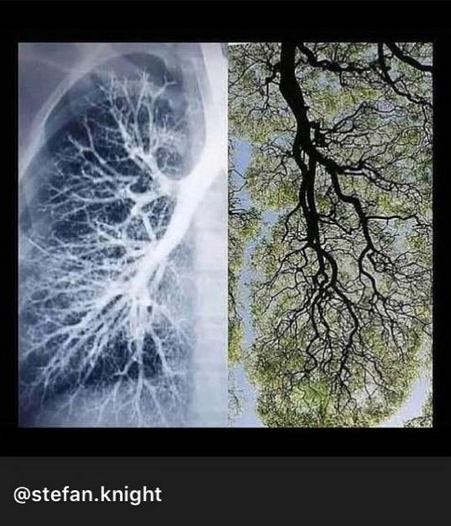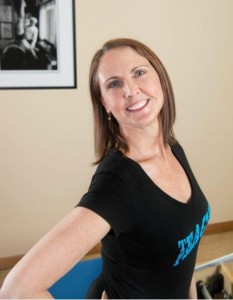Issue #315 – Wednesday, October 21, 2020
Diving Deeper into the Pilates Matwork to Keep It Fresh
by Amy Taylor Alpers
Pilates teachers often ask me, “How can I keep my Mat classes interesting – both for my clients and for myself? It’s so repetitive.” It’s basically the same set of exercises done in the same order over and over again, right? I mean, how many ways can there possibly be to speak it so that you don’t sound like a tape recording? Especially right now during this crazy period of lockdown and online teaching of clients who may have no equipment available to them.
Surprisingly, having been teaching Mat regularly for over 30 years, I can honestly say I have never felt that way. In my mind, there is so much depth to be mined from the material that it’s endlessly interesting, creative, empowering and healing. And you don’t even need to break exercises down, or make up new ones, or add props and gimmicks just to mix it up and stretch it out, although those are options too. So, let’s discuss the many ways you can potentially re-frame, re-vive, and re-fresh your Pilates Mat classes. Let’s look at the Mat series through an ever-changing kaleidoscopic lens of possibilities so it’s all new again each time you teach it.

I often become curious about a certain issue, and that can become my theme for quite a while as I explore all its potential for helping my clients. Perhaps the way the pelvis moves on the femur differently in each exercise, or vice versa, the way the femur moves in the pelvis. Or sometimes I’ve just recently studied a particular part of the body because I was interested to learn something new or was even asked a question about it that I couldn’t answer. Exploring just one question can become a theme for a whole series of classes.
A single class can be spent just focusing on feeling a specific joint move at the bony (vs. muscular) level or vice versa. For instance, as you move, imagine your hips, ankles, or shoulder joints are gliding and rotating easily in their sockets as if they were floating or coated in a soft, warm, slippery liquid. This can help to free movement up in amazing ways – when your image is remarkably close to the actual way things work, it’s even more effective. This way of thinking as you move is also extremely therapeutic as it actually helps keep the joints healthy, lubricated, hydrated and oxygenated at the same time. You can even add that thought – imagine that liquid is filled with healing oxygen!
Choosing very intentional and specific words can really re-frame everything. For instance, what’s the difference between contracting a muscle, which is an active movement, versus gripping, hardening, or tightening it, which can feel like actually stopping movement? Certainly, it stops movement at a circulatory level at the very least. Exactly the opposite of the intention to stimulate that “internal shower.”
You can teach a whole Mat class just focusing on a certain muscle or set of muscles – there are more than 600 of those in the human body. For instance, what do the glutes do in each exercise? You can treat them as a single group of muscles, or work with each separately. What is their job? How do they help you move? How do they help or hinder pelvic and hip joint balance, symmetry and stability? How do they support and move your legs, your sacrum, your spine? How do they interact with other muscles in a full-body way? I find many clients can’t access their glutes easily and yet they are so important to our structure. Focusing every exercise on how to use them correctly is extremely helpful for all sorts of hip, knee, spine and neck issues.
Or you can devote an entire class – or even a month of classes! – to the abdominals. For example, focus just on the deepest layer – the transversus – and how it helps in every exercise with spinal strength, flexibility, stability, and especially breathing. The transversus is the primary exhale muscle, and as we know, Joseph Pilates said that to breathe correctly, you must “exhale every atom of air from your lungs until they are as empty as a vacuum.” How does one really do that? And what does it do for your whole body health? What other muscles are involved? The diaphragm, intercostals, etc. More class themes. It’s amazing to watch clients truly connect to their breath.

How does something as seemingly simple as flexing an ankle correctly actually change everything? For instance, the way your lower back opens in flexion as in Spine Stretch? Or the way your pelvis and legs are stabilized in Saw to facilitate better rotation. Ankle flexion even affects the way your eyes sit in their sockets? It’s all connected. Lots to explore.
What about something seemingly straightforward – straightening a knee healthfully and wisely? It’s actually quite a complicated movement for our overly sedentary bodies. Doing that when getting out of chair is a completely different movement sequence from how it works when standing up from a squat, which is actually the way knees are designed to move naturally and safely. Can you help your clients explore their current pattern, and learn a more valuable one, in nearly every exercise … and possibly save their knees in the process?
Creatively re-framing the exercises not only keeps them fresh and new each time, but infinitely stretches your understanding of the movements and their effect on the body. Another amazing side effect of this practice is that your clients go deeply inside their own bodies and learn to explore them and become more responsible and empowered. When you spend less time creating new exercises or adding props and toys, and more time discovering all the possibilities available in the classic Mat, suddenly the world of Pilates opens up in ways you never expected.
 Amy Taylor Alpers co-founded The Pilates Center (TPC) and The Pilates Center Teacher Training Program (TPCTTP) over 20 years ago in Boulder, Colorado. When not traveling the world to teach both foundational and graduate level Pilates teacher education she remains part of the core faculty for TPCTTP, mentors advanced teachers, teaches classes and sees clients. In addition to teaching TPC sponsored workshops, Amy has presented numerous times at the Pilates Method Alliance Annual Meeting, Balanced Body’s Pilates on Tour and Passing the Torch. In 2013, Amy presented at the Shared Traditions Conference for Fletcher Pilates and will present at The Pilates Roundtable.
Amy Taylor Alpers co-founded The Pilates Center (TPC) and The Pilates Center Teacher Training Program (TPCTTP) over 20 years ago in Boulder, Colorado. When not traveling the world to teach both foundational and graduate level Pilates teacher education she remains part of the core faculty for TPCTTP, mentors advanced teachers, teaches classes and sees clients. In addition to teaching TPC sponsored workshops, Amy has presented numerous times at the Pilates Method Alliance Annual Meeting, Balanced Body’s Pilates on Tour and Passing the Torch. In 2013, Amy presented at the Shared Traditions Conference for Fletcher Pilates and will present at The Pilates Roundtable.
Amy was born in Youngstown, Ohio where she began classical ballet at age two.
She attended The Juilliard School for Dance, danced with the Garden State Ballet in New Jersey, and received a B.A. in Dance and a M.A. in Dance History from New York University. In addition, Amy taught ballet at various dance schools in New York City for ten years before launching her Pilates career.
Both Amy and her sister Rachel studied Pilates under the direct tutelage of Romana Kryzanowska at the original Pilates Studio in New York City. They received their Pilates teaching certificate from there in July of 1989. In 1990, after moving to Boulder, Colorado, Amy and Rachel founded The Pilates Center. The sisters then created and established The Pilates Center Teacher Training Program in 1991. The school has since expanded to include an Intermediate Program, Advanced Program, Bridge Program, Master’s Program, and a Mentorship Program. In addition, TPC now has “Licensed” and “Host” studios established all around the world.
Amy and her sister wrote The Everything Pilates Book, published in 2002. She was a founding board member of the PMA and sat on the board that created the PMA Certification Exam. Recently she has also had the honor of filming classes and workshops for online organizations such as Pilates Anytime and Pilates On Demand.
In 2011, Amy, her sister Rachel, and Ken Endelman of Balanced Body, developed CenterLine – a line of equipment designed for classical Pilates and based upon the specifications pioneered by Joseph Pilates.


 Amy Taylor Alpers co-founded The Pilates Center (TPC) and The Pilates Center Teacher Training Program (TPCTTP) over 20 years ago in Boulder, Colorado. When not traveling the world to teach both foundational and graduate level Pilates teacher education she remains part of the core faculty for TPCTTP, mentors advanced teachers, teaches classes and sees clients. In addition to teaching TPC sponsored workshops, Amy has presented numerous times at the Pilates Method Alliance Annual Meeting, Balanced Body’s Pilates on Tour and Passing the Torch. In 2013, Amy presented at the Shared Traditions Conference for Fletcher Pilates and will present at The Pilates Roundtable.
Amy Taylor Alpers co-founded The Pilates Center (TPC) and The Pilates Center Teacher Training Program (TPCTTP) over 20 years ago in Boulder, Colorado. When not traveling the world to teach both foundational and graduate level Pilates teacher education she remains part of the core faculty for TPCTTP, mentors advanced teachers, teaches classes and sees clients. In addition to teaching TPC sponsored workshops, Amy has presented numerous times at the Pilates Method Alliance Annual Meeting, Balanced Body’s Pilates on Tour and Passing the Torch. In 2013, Amy presented at the Shared Traditions Conference for Fletcher Pilates and will present at The Pilates Roundtable.
